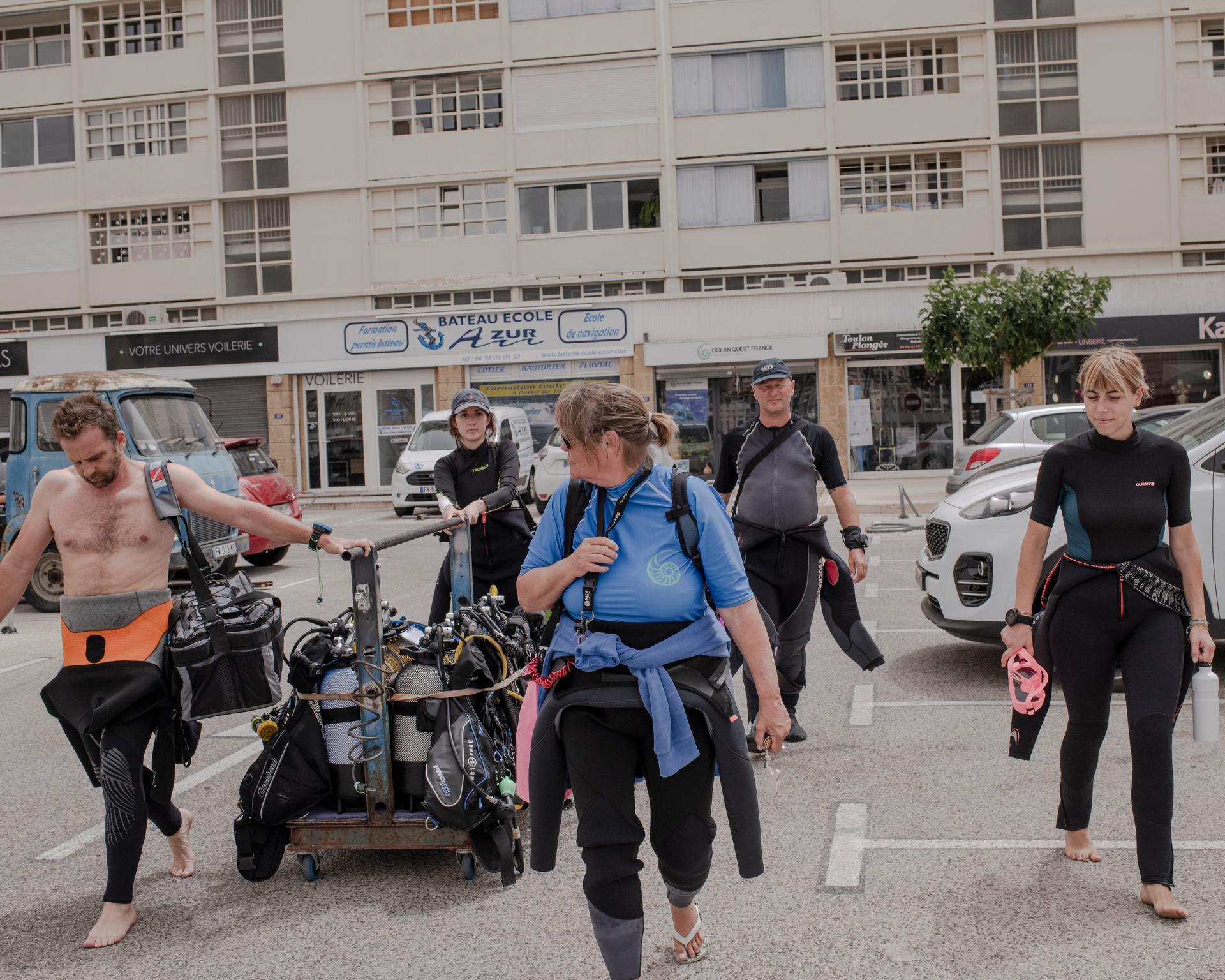

In the Mediterranean, the underwater fairies taking care of the coral
Feature'Repairing the Earth' (4/6). The Ocean Quest organization catalogs and replants corals. These marine organisms, home to a wealth of biodiversity, are threatened by global warming and ocean acidification. A race against time is underway, with the help of science.
Sounds ricocheted off the surface of the water that day. The bay of Toulon echoed with sailors racing around the buoy, children laughing aboard their dinghies and speedboat engines. Between the Pipady passage and the Giens peninsula, which hides Porquerolles, the massive 199-meter-long amphibious helicopter carrier Dixmude turned in the water, like an echo of the world's chaos.

A few hundred meters away, a fast inflatable boat known as Poisson-Vole bounced on the waves, as it headed for Sainte-Marguerite Cove. At the helm, wearing a neoprene wetsuit pulled up over her legs and a hooded sweater, diving instructor and marine life advocate Sandrine Treyvaud shouted: "It's too rough! We'll start by doing an inventory!" Everyone checked their equipment, including their tank and regulator, as well as their underwater pad and pencil, measuring tape and dive computer. Their words were drowned out by the speedboat's roar.
Recording the state of preservation
Once below the surface, everything was suddenly engulfed by the silence of the sea. In pairs, surrounded by oxygen bubbles, the divers descended toward the posidonia seagrass beds, gliding along rocks covered with orange sponges, padina and spherical-shaped codium algae. Here, nature seems untouched – unlike at the base of the Fer-à-Cheval cove, just below a road, where tires and the occasional scrapped cars can be found.
At 11 meters, the first Cladocora caespitosa came into view – spherical, greenish-brown and less conspicuous than its tropical cousins. A diver measured it carefully to avoid crushing the polyps' tentacles that catch suspended plankton. Meanwhile, another participant looked closely and recorded the dimensions (21 centimeters by 18); the depth; and the state of preservation, graded from " + + +" to "- - -," depending on the number of damaged or bleached polyps. This one was recorded as "-". One colony after another, the inventory continued, with a few gestures to signal the way. Fin strokes scared away the octopuses, in the middle of their breeding season, but not the schools of wrasse, which remained unfazed.
Here, some of the corals discovered are no longer anonymous. In the seven years since establishing Ocean Quest France, a conservation and restoration organization, Treyvaud has named some of them "after friends, children and grandchildren." As such, there's "Charlie," named after the NGO's president's granddaughter. On the slope, there's also "Oli," a ball of polyps measuring 42 centimeters by 30 centimeters. "He's doing better, it's nice to see him turning green again...," said the diver. Three years ago, in August 2022, this colony suffered a marine heatwave. For three weeks, the surface water reached record temperatures of up to 26°C. When temperatures exceed 24°C, Cladocora caespitosa start expelling the algae that live in symbiosis with them.
You have 85.5% of this article left to read. The rest is for subscribers only.
